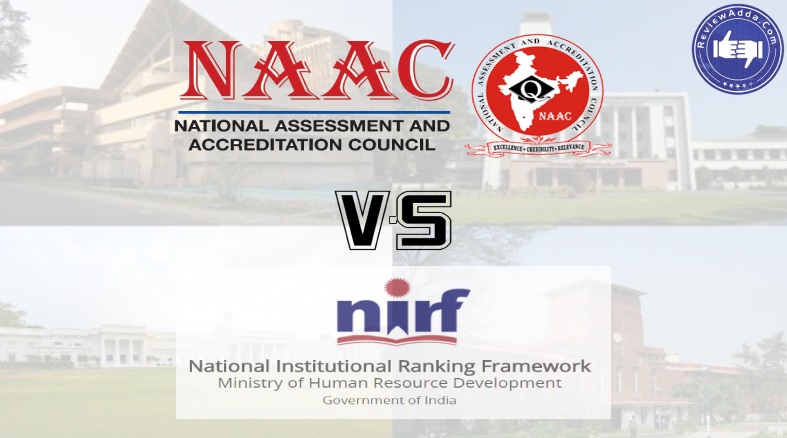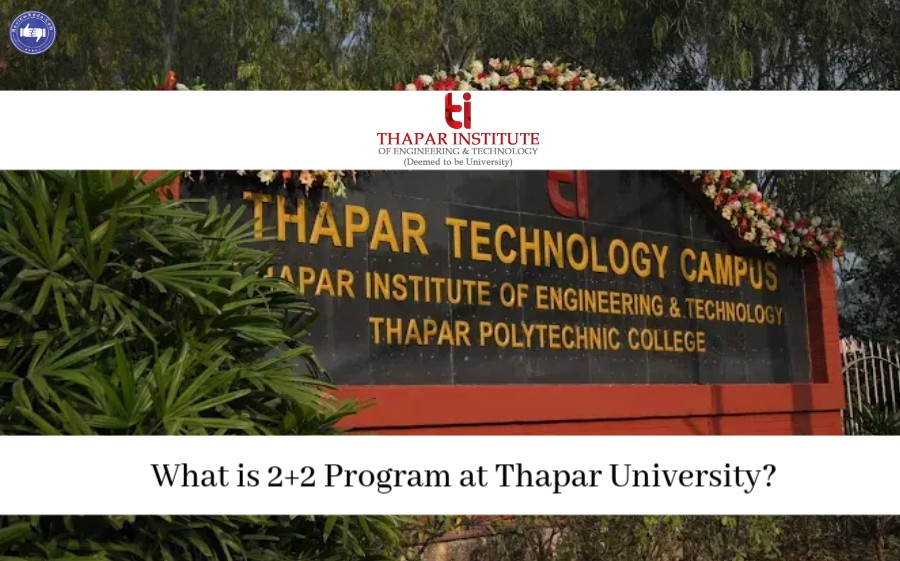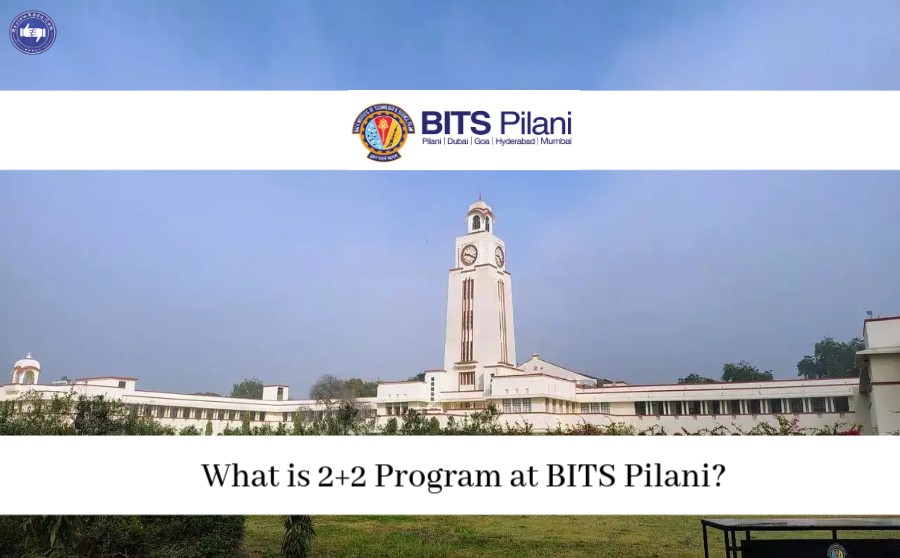Topic We Cover: NAAC Vs. NIRF
1. National Assessment and Accreditation Council (NAAC)
- VISION OF NAAC
- MISSION OF NAAC
- FUNCTIONING
- ASSESSMENT AND ACCREDITATION
- ELIGIBILITY CRITERIA
- CRITERIA AND WEIGHTAGES
- GRADING
2. NATIONAL INSTITUTIONAL RANKING FRAMEWORK (NIRF)
- METHODOLOGY
- Ranking Parameters and Weightages (Overall)
- Teaching, Learning & Resources (TLR)
- Teaching, Learning & Resources (TLR)
- Graduation Outcome (GO)
- Perception (PR)
3. NAAC Vs. NIRF
NAAC Vs. NIRF
National Assessment and Accreditation Council, (NAAC) was founded by the University Grants Commission (UGC) of India in the year 1994 for assessing and giving accreditation to the Institutions for Higher Education in the country. It is an autonomous body and was an outcome of recommendations given by National policy in Education (NPE), 1986 and Plan of Action (POA), 1992. For concerns such as quality of education, relevance of education, NPE and POA, both advocated for establishment of an independent National Accreditation Agency and so consequently, National Assessment and Accreditation Council (NAAC) was founded in the year 1994 with its headquarters at Bengaluru. The mandate of National Assessment and Accreditation Council (NAAC) is to assure that quality education remains an integral part of the Higher Education Institutions.

National Institutional Ranking Framework, (NIRF) was launched on 29th September, 2015 by the then Honourable Human Resource Development Minister. NIRF is approved by the Ministry of Human Resource Development (MHRD) and it lays out the methodology to provide rank to the various universities and institutions across the whole country. The framework provides rank to the institutions and universities after considering various parameters such as Teaching, Learning and Resources, Research and Professional Practices, Graduation Outcomes, Outreach and Inclusivity, and Perception.
Let us discuss about both these organisations in detail.
NAAC
Assessment and accreditation of Higher Educational Institutions such as colleges, universities and recognised institutions is conducted by National Assessment and Accreditation Council. Evaluation is done by the NAAC to see the accordance with the quality standards which relates to the performances and outcomes of educational processes, coverage of the curriculum, teaching and learning processes, faculty and teachers, research and development, infrastructure, organisation, governance, learning resources, financial status and services provided to students.
VISION OF NAAC
Vision of NAAC is to establish quality as the defining element of the higher education throughout India. It aims of achieving it by conducting self and external evaluation together and through promotion and sustenance initiatives.
MISSION OF NAAC
- Mission of NAAC is to arrange on periodic basis the assessment and accreditation of Institutions of Higher Education and also of specific academic programmes or projects.
- To encourage such an academic environment in higher education institutions that promotes quality of teaching and learning.
- Encouraging self-evaluation, accountability, autonomy and innovations in higher education system.
- To promote quality-based research studies, consultancy and training programmes and projects.
- Collaborating with the other stakeholders of higher education for evaluation of quality education.
FUNCTIONING
Functioning of National Assessment and Accreditation Council (NAAC) is governed through its General Council (GC) and Executive Committee (EC). Both the committees comprise of educational administrators, policy makers and senior academicians whom are from the higher education systems spread all across India. The Chairperson of University Grants Commission (UGC) is also the President of General Council (GC) of NAAC. The Chairperson of Executive Council (EC) is a person who is an eminent academician and who has been nominated by the President of the General Committee (GC). The Academic and Administrative head of NAAC is the Director who is also the member-secretary of both the General Council and the Executive Committee. Additionally, there are also other statutory bodies which formulate the policies and steers the core staff to support the various activities of NAAC. There are also other advisory and consultative committees which are constituted from time to time for providing advice to NAAC.
ASSESSMENT AND ACCREDITATION
Education plays an imperative role in the development of a country and if the Higher Education systems present in the country deliver quantity and quality of higher education then this would be in the benefit of the students and country both. NAAC has been formulated to facilitate voluntary assessment of the performances of the institutions through set parameters and a process that involves participation of the institution/ University.
ELIGIBILITY CRITERIA
For applying for the process of Assessment and Accreditation (A&A) of NAAC, Higher Education Institutions (HEIs) shall have a record of at least two batches of students that have graduated from the institution or it has been in existence for six years; whichever is earlier. The HEIs can also apply if they fulfil the other conditions or if they are covered by the other provisions which are mentioned below:
- Central University, State University, Private University, Deemed-to-be University and Institutions of National Importance
- Provided that if the institutions or Deemed-to-be Universities and their off-campuses are approved by MHRD/UGC then, NAAC will not consider their unapproved off-campuses for Assessment and Accreditation.
- Provided that the above mentioned institutions have regular students enrolled in to the teaching and research programmes which are offered on the campus.
- Provided that any campus established within the country will be treated as a part of the Universities or Institutions of National Importance for the Assessment and Accreditation process.
- NAAC will not conduct accreditation of any off-shore campus.
- Autonomous Colleges, Constituent Colleges, Affiliated Colleges (The colleges are affiliated to universities recognised by UGC as an affiliating University)
- Provided that the colleges are affiliated to a University which has been recognised by University Grants Commission. Constituent colleges of a private university or of Deemed-to-be University are considered to be the constituent units of that University and therefore they will not be considered independently for the process of A&A.
- Accredited HEIs applying for Reassessment or Subsequent Cycles (Cycle 2, Cycle 3, Cycle 4) of Assessment
- An institution which wants to make improvement in their accreditation status can apply to NAAC for re-assessment only after one year and before three years of accreditation. The institution shall also fulfil other terms and conditions which are specified by NAAC for this purpose.
- Any other Higher Education Institutions (HEIs), at the discretion of NAAC.
NAAC does not provide accreditation to any distance education units of HEIs and any offshore HEIs campuses. Any institution applying for Assessment and Accreditation by NAAC shall mandatorily upload the required information on the portal of All India Survey on Higher Education (AISHE). AISHE code or reference number is one of the requirements for Registration for the A&A process.
CRITERIA AND WEIGHTAGES
For its assessment procedures, NAAC has identified a set of seven criteria’s. It has categorised the Higher Educational Institutions into three main types, i.e University, Autonomous College, and Affiliated/Constituent College. NAAC has assigned different weightages to these seven criteria under various key aspects which are based on the functioning and organizational focus of these three types of HEIs.
Criteria Wise differential weightages of the three types of High Educational Institution:
|
Curricular Aspects |
150 (U) |
150 (Au) |
100 (Aff UG) |
100 (Aff PG) |
|
Teaching-learning & Evaluation |
200 (U) |
300 (Au) |
350 (Aff UG) |
350 (Aff PG) |
|
Research, Innovations & Extension |
250 (U) |
150 (Au) |
110 (Aff UG) |
120 (Aff PG) |
|
Infrastructure & Learning Resources |
100 (U) |
100 (Au) |
100 (Aff UG) |
100 (Aff PG) |
|
Student Support & Progression |
100 (U) |
100 (Au) |
140 (Aff UG) |
130 (Aff PG) |
|
Governance, Leadership & Management |
100 (U) |
100 (Au) |
100 (Aff UG) |
100 (Aff PG) |
|
Institutional Values & Best Practices |
100 (U) |
100 (Au) |
100 (Aff UG) |
100 (Aff PG) |
GRADING
Every Institution is graded for each of the above seven key aspects under four types of categories i.e. A (Very Good level), B (Good level), C (Satisfactory level), and D (Unsatisfactory level). A summated score for every key aspect is calculated and GPA is calculated after application of appropriate weighatge. Then, a Cumulative GPA is derived out from the seven GPAs related to seven criteria’s after application of prescribed weightage to every criterion.
RANGES OF INSTITUTIONAL CUMULATIVE GRADE POINT AVERAGE (CGPA)- Effective from July, 2017.
|
Ranges of Institutional Cumulative Grade Point Average (CGPA) |
Letter Grade |
Status |
|
3.51 - 4.00 |
A++ |
Accredited |
|
3.26 - 3.50 |
A+ |
Accredited |
|
3.01 - 3.25 |
A |
Accredited |
|
2.76 - 3.00 |
B++ |
Accredited |
|
2.51 - 2.75 |
B+ |
Accredited |
|
2.01 - 2.50 |
B |
Accredited |
|
1.51 - 2.00 |
C |
Accredited |
|
<= 1.50 |
D |
Not accredited |
NATIONAL INSTITUTIONAL RANKING FRAMEWORK (NIRF)
NIRF provides ranking to various Institutions. It uses a quantitative methodology to reach the final rank that has to be given to a institution or university.
METHODOLOGY
Methodology is development of a standard of measurement or a system for ranking of various academic institutions based on the different parameters set by the core committee of NIRF. The parameters/ criteria’s are divided into five heads namely; Teaching, Learning & Resources, Research and Professional Practice, Graduation Outcomes, Outreach and inclusivity, and Peer Perception. These are further divided into sub-heads. Each broad parameter has been assigned overall weight to it and each sub-head also has a weight distributed to it.
Relevant data is identified to measure the performance score under each head and sub-head. Identification of data is necessary, which can be easily provided by the institution or a third party source. A suitable proposed metric then calculates the score of each sub-head as per the data and then all the scores of the sub-heads are added to obtain the score of every individual head. Based on the weights allotted to each head, their overall score is computed. Overall score can be of maximum value 100.
The institutions are ranked on the basis of their overall scores.
Ranking Parameters and Weightages (Overall)
|
Sr. No. |
Parameter |
Marks |
Weightage |
|
1 |
Teaching, Learning & Resources |
100 |
0.30 |
|
2 |
Research and Professional Practice |
100 |
0.30 |
|
3 |
Graduation Outcomes |
100 |
0.20 |
|
4 |
Outreach and Inclusivity |
100 |
0.10 |
|
5 |
Perception |
100 |
0.10 |
|
S.No. |
Parameters |
Marks |
|
1. |
Teaching, Learning & Resources (TLR) Ranking weight: 0.30 |
100 |
|
||
|
2. |
Research and Professional Practice (RP) Ranking weight: 0.30 |
100 |
|
||
|
3. |
Graduation Outcomes (GO) Ranking weight: 0.20 |
100 |
|
||
|
4. |
Outreach and Inclusivity (OI) Ranking weight: 0.10 |
100 |
|
||
|
5. |
Perception (PR) Ranking weight: 0.10 |
100 |
|
A. Peer Perception: Academic Peers and Employers (PR): 100 marks |
 Get Updated Review ( Voice Based Alumni Feeback)
Get Updated Review ( Voice Based Alumni Feeback)
-
 Check Review (Alumni Feedback) - Chitkara University – Click Here
Check Review (Alumni Feedback) - Chitkara University – Click Here -
 Check Review (Alumni Feedback) - Pacific University – Click Here
Check Review (Alumni Feedback) - Pacific University – Click Here -
 Check Review (Alumni Feedback) - Parul University – Click Here
Check Review (Alumni Feedback) - Parul University – Click Here -
 Check Review (Alumni Feedback) - Jagran Lake City – Click Here
Check Review (Alumni Feedback) - Jagran Lake City – Click Here -
 Check Review (Alumni Feedback) - Manipal University – Click Here
Check Review (Alumni Feedback) - Manipal University – Click Here
Teaching, Learning & Resources (TLR): 100 marks
- Ranking weight: 0.30
- Overall Assessment Metric:
TLR = SS (20) + FSR (30) + FQE (20) + FRU (30)
Component metrics based on :
- Student Strength including Ph.D. Students: SS
- Faculty-Student Ratio with emphasis on permanent faculty: FSR
- Combined metric for Faculty with PhD (or equivalent) and Experience: FQE
- Financial Resources and Their Utilization: FRU
Student Strength including Ph.D. students (SS): 20 Marks
- SS = f(NT, NE) × 15 + f(NP) × 5
- The functions f(NT ,NE) and f(Np) are functions to be determined by NIRF.
- NT: Total sanctioned approved intake in the institution considering all UG and PG programs of the institution.
- NE: Total number of students enrolled in the institution considering all UG and PG programs of the institution.
- Np = Total number of students enrolled for the doctoral program till previous academic year.
Faculty-Student Ratio with emphasis on permanent faculty (FSR): 30 marks
- FSR = 30 × [15 × (F/N)]
- N =NT+ Np
- F: Full time regular faculty in the institution in the previous year.
- Regular appointment means Faculty on Full time basis. Faculty on contract basis/ad- hoc basis will be considered if the concerned faculty has taught in both the semesters of academic year 2017-18.
- Faculty members with Ph.D. and Masters degree will be considered and counted here. Faculty member with a Bachelor’s degree will not be counted.
- Expected ratio is 1:15 to score maximum marks.
For F/N < 1: 50, FSR will be set to zero.
Combined Metric for Faculty with PhD (or equivalent) and Experience (FQE): 20 marks
- FQ = 10 × (FRA/95) , FRA < 95%;
- FQ = 10, FRA ≥ 95%.
- Here FRA is the percentage of Faculty with Ph.D. (or equivalent qualification) with respect to the total no. of faculty required or actual faculty whichever is higher, in the previous year.
F1=Fraction with Experience up to 8 years;
F2= Fraction with Experience between 8+ to 15years; F3=Fraction with Experience > 15 years.
FE = 3min (3F1, 1) + 3 min (3F2, 1) + 4 min (3F3, 1)
Rationale: Full marks for a ratio of 1:1:1
- FQE = FQ + FE
- Primary Data: Faculty List in the Prescribed Format.
: Financial Resources and their Utilisation (FRU): 30 Marks
FRU = 7.5×f(BC) + 22.5×f(BO)
- BC: Average Annual Capital Expenditure per student for the previous three years. (Excluding expenditure on construction of new buildings)
- BO: Average Annual Operational (or Recurring) Expenditure per student for the previous three years. (Excluding maintenance of hostels and allied services)
- Primary Data: Figures in prescribed format for each.
Research and Professional Practice (RP): 100 marks
- Ranking weight: 0.30
- Overall Assessment Metric:
RP = PU(35) + QP(35) + IPR(15) + FPPP(15)
- The component metrics explained on following pages.
- Combined Metric for Publications: PU
- Combined Metric for Quality of Publications: QP
- IPR and Patents: Published and Granted: IPR
- Footprint of Projects, Professional Practice and Executive Development Programs: FPPP
Combined metric for Publications (PU): 35 marks
PU = 35 × f(P/FRQ)
- P is weighted number of publications as ascertained from suitable third party sources.
- FRQ is the maximum of nominal number of faculty members as calculated on the basis of a required FSR of 1:15 or the available faculty in the institution.
- Sources: Third party sources.
Combined metric for Quality of Publications (QP): 35 Marks
QP = 20 × f (CC/FRQ) + 15× f (TOP25P/P)
- Here CC is Total Citation Count over previous three years.
- P is as computed for PU.
- TOP25P: Number of citations in top 25 percentile averaged over the previous three years.
- FRQ is the maximum of nominal number of faculty members as calculated on the basis of a required FSR of 1:15 or the available faculty in the institution.
Primary Data: Third Party Sources.
IPR and Patents: Patents Published & Granted (IPR): 15 marks IPR = IPG + IPP
IPG = 10× f (PG)
PG is the number of patents granted over the previous three years.
IPP = 5 × f (PP)
PP: No. of patents published over the previous three years.
Primary Data: Third Party Sources
Footprint of Projects, Professional Practice and Executive Development Programs (FPPP): 15 marks
- FPPP = FPR + FPC + EDP
- FPR = 5 × f(RF)
- RF is the average annual research funding earnings (amount received in rupees) at institute level in previous three years.
- FPC =5 × f(CF)
- CF is the average annual consultancy amount (amount actually received in rupees) at institute level in previous three years.
- EDP = 5 × f(EP)
- EP = Average annual earnings from Full Time Executive Development Programs of a minimum duration of one year in previous three years.
- Primary Data: To be provided by the institution in prescribed format.
Graduation Outcome (GO):100 marks
- Ranking weight: 0.20
- Overall Assessment Metric:
- GO = GUE(60) +GPHD(40)
- The component metrics are explained on the following pages:
- Metric for University Examinations: GUE
- Metric for Number of Ph.D. Students Graduated: GPHD
Metric for University Examinations (GUE): 60 Marks
GUE = 60 × min [(Ng/80), 1]
Ng is the percentage of Students (as a fraction of the approved intake), averaged over the previous three years, passing the respective university examinations in stipulated time for the program in which enrolled.
Primary Data: To be provided in a prescribed format
- Metric for Number of Ph.D Students Graduated (GPHD): 40 Marks
- GPHD = 40 × f(Nphd)
- Nphd = Average number of Ph.D students graduated (awarded Ph.D) over the previous three years
- Primary Data: Number of graduating Ph.D. Students as reflected in the approved Annual Report/Convocation Report to be provided in the prescribed format.
- Outreach and Inclusivity (OI): 100 marks
- Ranking weight: 0.10
- Overall Assessment Metric: OI = RD(30) + WD(30) +ESCS(20) + PCS(20)
The component metrics are explained on following pages:
- Percentage of Students from Other States/ Countries (Region Diversity): RD
- Percentage of Women (Women Diversity): WD
- Economically and Socially Challenged Students: ESCS
- Facilities for Physically Challenged Students: PCS
Percentage of Students from Other States/ Countries (Region Diversity RD): 30 marks
RD = 25 × fraction of total students enrolled from other states + 5 × fraction of students enrolled from other countries
Primary Data: To be provided in the prescribed format.
Percentage of Women (Women Diversity WD): 30 marks
- WD = 15 × (NWS/50) + 15 × (NWF/20)
- NWS are the percentage of Women students.
- NWF are the percentage of Women Faculty including women members in senior administrative positions, such as Heads of Departments, Deans or Institute Heads.
- Expectation: 50% women students and 20% women faculty.
- Primary Data: To be provided in the prescribed format.
Economically and Socially Challenged Students (ESCS) : 20 marks
- ESCS = 20 × f(Nesc)
- Nesc is the percentage of UG or *PG students being provided full tuition fee rembursement by the institution to pursue their degree programs.
- Primary Data: To be provided by the institution in a prescribed format.
- Facilities for Physically Challenged Students (PCS): 20 marks
- PCS = 20 marks, if the Institute provides full facilities for physically challenged students, as outlined. Or, in proportion to facilities.
- Basis: Verifiable Responses to Questions.
- Primary Data: To be provided in a prescribed format.
Perception (PR) – 100 marks
- Ranking weight: 0.1
- Overall Assessment Metric: PR = 100
- Component metrics are explained in the following pages:
- Peer Perception: Employers & Academic Peer (PR): 100 marks
- Peer Perception: Employers & Academic Peer (PR): 100 marks
- This is to be done through a survey conducted over a large category of Employers, Professionals from Reputed Organizations and a large category of academics to ascertain their preference for graduates of different institutions.
- Comprehensive list will be prepared taking into account various sectors, regions, etc.
- Lists to be updated periodically.
Both NAAC and NIRF are organizations which measure the quality of education through different perspectives and where one provides accreditation to the Institutions and other provides ranking. Here is a comparison between the both:
|
NAAC |
NIRF |
|
NAAC does assessment and provides accreditation to various Institutions and Universities |
On the other hand, NIRF provides ranking to the Institutions and Universities. |
|
The evaluation method is Qualitative. |
NIRF has quantitative methodologies which it follows to provide ranks to Educational Institutions. |
|
Accreditation is provided for a period of five years. |
Rank provided by NIRF is valid for a period of one year. |
|
Assessment and Accreditation is conducted by internal and external evaluation which is done together. |
Rank can be provided only once the data is received and due verification of it has been done by NIRF. |
|
The evaluation is done on the basis of seven criteria’s. |
There are five parameters on the basis of which ranking are done. |






